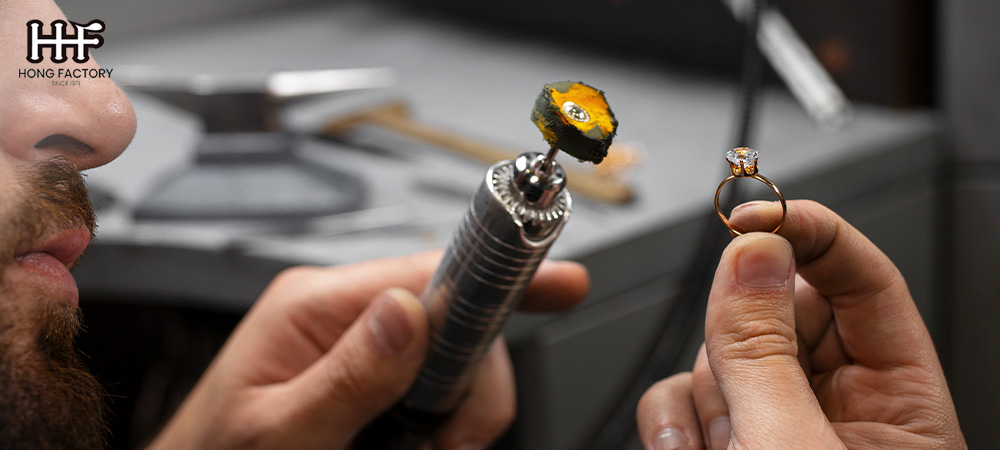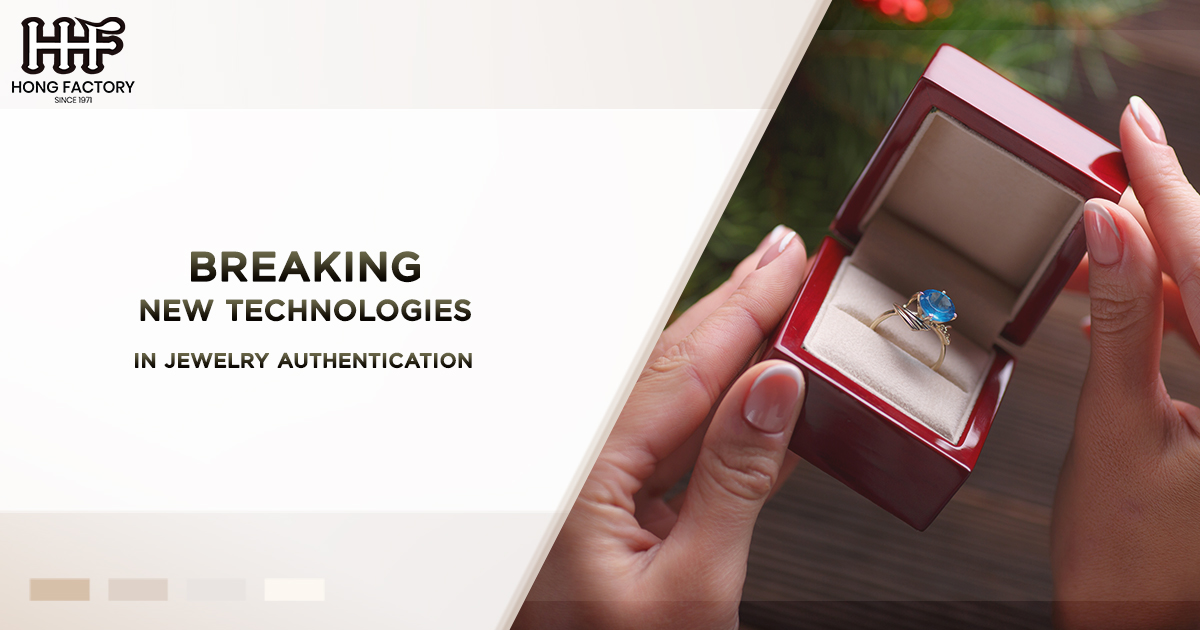The global jewelry industry has long been a symbol of luxury, tradition, and craftsmanship. However, with the rise of counterfeit goods and fraudulent activities, the need for robust jewelry authentication methods has become a critical focus. Today, cutting-edge technologies are transforming the way we authenticate, verify, and protect valuable jewelry. Modern innovations not only enhance security but also provide transparency for buyers and sellers alike. This article explores the latest advancements in jewelry authentication, highlighting their role in fraud prevention and ensuring trust in the jewelry market.
The Growing Importance of Jewelry Authentication
As the jewelry market continues to grow, so does the prevalence of fake gemstones, counterfeit designs, and fraudulent certifications. According to recent reports, the global counterfeit goods industry is expected to reach $4.2 trillion by 2025, with jewelry being one of its most targeted sectors. Counterfeit pieces not only deceive buyers but also undermine the reputation of legitimate brands and artisans.
To combat this, the industry is increasingly relying on innovative technology advances to implement more efficient authentication methods. These advances help verify the authenticity of precious stones, metals, and designs, minimizing risks associated with counterfeiting.

Modern Authentication Techniques
Laser Inscription Technology
One of the most prominent breakthroughs in jewelry authentication is laser inscription. Specialized lasers can engrave microscopic identifiers, including unique serial numbers, branding, or certification marks, onto the surface of diamonds and other gemstones. These markings are invisible to the naked eye but can be easily read using specialized devices during resale or appraisal.
Laser inscriptions also contribute significantly to fraud prevention, as they provide a permanent and tamper-proof method of identification. For instance, the Gemological Institute of America (GIA) often uses laser inscription to mark their graded diamonds, ensuring buyers can verify their purchases against laboratory records.
Blockchain Technology for Jewelry Verification
Blockchain is revolutionizing jewelry authentication by introducing a transparent and immutable record of ownership and origin. By embedding every transaction and movement of a piece of jewelry into a secure blockchain ledger, buyers can trace their purchase back to its source.
For example
- Tracking ethical sourcing – Blockchain technology allows consumers to verify whether the gemstones in their jewelry are ethically sourced, something increasingly important in the era of sustainable consumerism.
- Ownership verification – Blockchain creates an unchangeable digital “passport” for each piece, ensuring its authenticity during resale.
Major brands like De Beers and Cartier are already using blockchain to provide customers with a heightened level of transparency and trust in their pieces.
Artificial Intelligence (AI) and Machine Learning
AI-driven systems are making jewelry verification faster and more accurate. By analyzing thousands of data points, machine learning algorithms can detect irregularities in gemstones or jewelry designs that even skilled professionals might overlook.
Key Applications of AI in Jewelry Authentication
- Gemstone analysis – AI can identify a gemstone’s origin, cut quality, and potential treatments, ensuring that buyers receive authentic and accurately described items.
- Counterfeit detection – Modern AI systems can compare a piece of jewelry against known databases of authentic designs and flag any inconsistencies.
- Enhanced appraisal – AI simplifies the appraisal process by instantly calculating the value of a piece while confirming its authenticity.
X-Ray Fluorescence (XRF) Technology
XRF technology has become a gold standard for verifying metal compositions in valuable jewelry. By emitting high-energy X-rays onto a material, XRF devices can determine its chemical makeup and provide detailed reports about its purity and type of metal.
For buyers and sellers, XRF technology reduces the risks of purchasing fake or low-quality metals. For instance, it can distinguish between real gold and gold-plated alternatives, ensuring transparency in transactions.
Biometric Authentication
Biometric technologies, such as fingerprint or facial recognition, are being integrated into luxury jewelry pieces to personalize and secure them. High-end smart jewelry now incorporates biometric sensors, enabling pieces to serve as secure identification tools for owners.
Benefits of Biometric Integration in Jewelry
- Theft prevention – Jewelry embedded with biometric features can only be accessed or worn by its rightful owner.
- Unique personalization – Customization enhances the bond between the owner and their valuable piece, making it irreplaceable.
The Role of Technology Advances in Fraud Prevention
Fraud prevention is at the heart of modern jewelry authentication. Many counterfeiters rely on exploiting traditional methods, but technology-driven systems create a significant barrier against these activities.
How Technology Supports Fraud Prevention
- Data sharing – Global platforms now allow jewelers, appraisers, and buyers to share data securely, making fraud detection faster and more efficient.
- Secure transactions – Blockchain and other digital systems ensure that every transaction is verifiable and traceable.
- Enhanced education – Technological advancements empower consumers with tools to independently verify the authenticity of their jewelry, reducing reliance on intermediaries.

Emerging Trends in Jewelry Verification
As technology continues to evolve, new trends are shaping the future of jewelry authentication.
Digital Certificates
Digital certificates are replacing traditional paper-based authentication documents. These certificates, often hosted on blockchain networks, serve as permanent records for buyers. They contain detailed information about the jewelry, including its origin, quality, and unique identifiers.
Augmented Reality (AR) Tools
AR is being used to help customers virtually inspect jewelry before making a purchase. Using AR apps, buyers can zoom in on microscopic details, ensuring they are satisfied with the authenticity and design. This trend is particularly popular in online marketplaces, where counterfeit risks are higher.
Near-Field Communication (NFC) Tags
NFC tags are being embedded into high-value jewelry, allowing buyers to scan them using their smartphones for instant verification. These tags act as digital keys, providing detailed information about the piece’s authenticity and origin.
The Future of Jewelry Authentication
As fraud prevention becomes more critical, the jewelry industry is expected to continue investing in advanced authentication methods. Artificial intelligence, blockchain, and laser technologies will likely dominate the landscape, offering unparalleled levels of security and transparency.
Moreover, collaborations between certification agencies, technology firms, and jewelry brands will drive the development of more sophisticated tools. These partnerships aim to create a future where buyers can purchase with complete confidence, knowing their jewelry is both authentic and ethically sourced.
Conclusion
The integration of modern technology in jewelry authentication is transforming the industry. From laser inscriptions to blockchain verification, these advancements are making fraud prevention more effective and authentication more accessible. For buyers and sellers alike, embracing these technologies ensures a secure and transparent jewelry market.
As we move forward, the adoption of innovative authentication methods will not only protect consumers but also elevate the standards of trust and integrity in the jewelry industry. For anyone investing in fine jewelry, staying informed about these technology advances is essential for making confident purchases in today’s competitive market.
